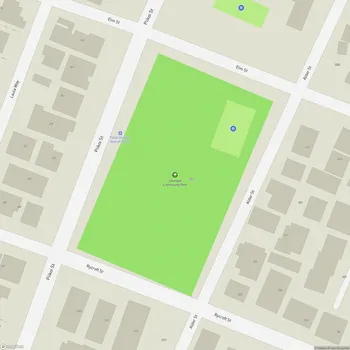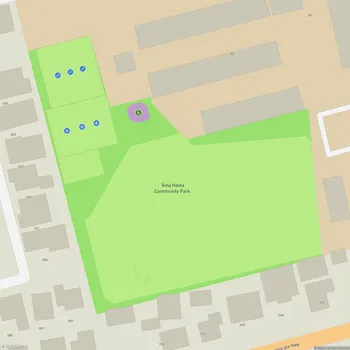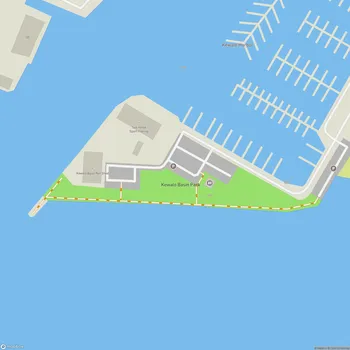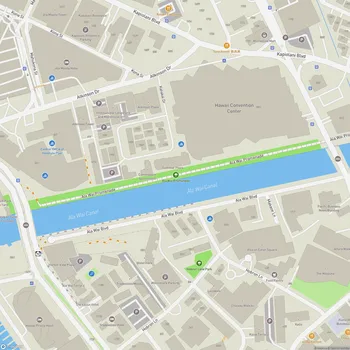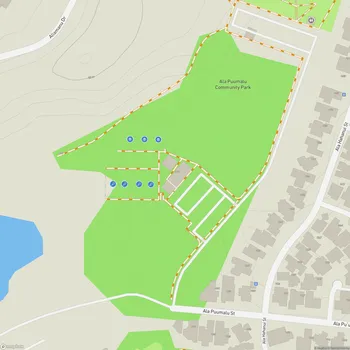Kapiʻolani Regional Park
Interactive Park Map
About Kapiʻolani Regional Park
A Piece of Hawaiian Heritage
Tucked between the bustling shores of Waikiki and the iconic silhouette of Diamond Head crater sits Kapiʻolani Regional Park - Hawaii's largest and second-oldest public park. This 300-acre green haven in Honolulu carries the name of Queen Kapiʻolani, who was the queen consort of King David Kalākaua.
What's fascinating is that this peaceful oasis wasn't always so inviting. Back in the day, it was actually marshlands and lagoons until 1877, when King Kalākaua drained the wetlands and dedicated the space to the public. Today, the City and County of Honolulu's Department of Parks & Recreation keeps this expansive retreat in tip-top shape for everyone to enjoy.

Natural Eye Candy
The scenery is impressive - with lush landscapes dotted with palm trees, massive banyan trees, and colorful hibiscus bushes that give the whole place a distinctly tropical character.
Beyond just being pretty to look at, the park's diverse plant life offers a little crash course in Hawaii's unique biodiversity. There's something incredibly refreshing about escaping the concrete jungle and breathing in the clean air among all this greenery.

More Than a Park
Kapiʻolani isn't your average neighborhood park. Within its boundaries, you can find the 42-acre Honolulu Zoo and the Waikiki Shell - a cool outdoor amphitheater where you can catch concerts and performances under the stars.
There's also a charming Bandstand where the Royal Hawaiian Band often performs on Sunday afternoons, filling the air with traditional Hawaiian melodies. If you happen to be around on May 1st, don't miss the Lei Day Festival with its vibrant music, dancing, and local craft booths - it's a genuine touch of Hawaiian culture.

Get Moving or Just Chill
Whether you're an exercise enthusiast or just looking to relax, Kapiʻolani offers plenty of options. The park's two-mile perimeter makes for a fantastic jogging route, and there are workout stations scattered throughout if you're feeling extra motivated.
Sports more your thing? Take your pick from tennis courts, volleyball courts, and pickleball courts. There are also wide-open fields for soccer, baseball, and other team sports. And yes, this is where exhausted runners cross the finish line during the Honolulu Marathon - quite the accomplishment!
If laid-back is more your speed, the spacious lawns are ideal for yoga sessions, picnics, or simply lounging with a good book.

Where Locals and Visitors Come Together
What makes Kapiʻolani interesting is its role as a local gathering place. While tourists flock to nearby Waikiki Beach, the park offers a more relaxed alternative with notably less crowding.
Local families often gather here for celebrations, taking advantage of the picnic areas and open spaces. You'll see dog owners walking their furry friends, kids playing, and people of all ages simply enjoying this shared space.

Instagram-Worthy Views
From various spots in the park, you can see Diamond Head - a dramatic backdrop for photos.
The park's location right next to Waikiki Beach means you can easily hop from a morning jog to an afternoon swim. If you're an early bird or sunset chaser, you're in for a treat - the changing light creates absolutely magical scenes across the landscape.
What we appreciate about Kapiʻolani is the sense of space that's harder to find in busier parts of Honolulu. It provides a natural retreat while still being just minutes away from the heart of the city.
All Features & Facilities
Active Recreation
Nature & Wildlife
Water Features & Activities
Visitor Services
Food & Gathering
Photo Gallery (click to enlarge)











ParkMagnet Score
Top Park
Park Size
Opening Hours
Weather
Top Restaurants Near Kapiʻolani Regional Park
Hawaii Sushi
856 feet3045 Monsarrat Ave Ste 1, Honolulu, HI 96815
Counter-service sushi restaurant featuring fresh local fish, traditional rolls, and rice bowls with friendly service.
South Shore Grill
0.2 miles3114 Monsarrat Ave, Honolulu, HI 96815
Family-owned casual eatery specializing in fresh fish tacos, burgers, and comfort food with local Hawaiian flair.
Mugen
0.3 miles2452 Kalākaua Ave, Honolulu, HI 96815
Upscale fine dining restaurant serving contemporary international cuisine with artistic presentation and exceptional service.
Sushi Spot Waikiki
0.4 miles204 Liliʻuokalani Ave, Honolulu, HI 96815
Fresh sushi restaurant featuring specialty rolls like the Phoenix Roll and creative Japanese dishes.
Tonkatsu Tamafuji
0.4 miles449 Kapahulu Ave, Honolulu, HI 96815
Authentic Japanese eatery specializing in crispy, handmade tonkatsu with unlimited rice and traditional accompaniments.
Five Star Poke
0.4 miles206 Kapuni St, Honolulu, HI 96815
Food truck serving fresh poke bowls with house-made sauces and various spicy seafood options.
Top Hotels Near Kapiʻolani Regional Park
Lotus Honolulu at Diamond Head
85 feet2885 Kalākaua Ave, Honolulu, HI 96815
Upscale hotel featuring stylish rooms with ocean views, wine tasting, and complimentary bike rentals.
Diamond Head Beach Hotel & Residences
180 feet2947 Kalākaua Ave, Honolulu, HI 96815
Oceanfront property offering condos with full kitchens and stunning Diamond Head views in a prime location.
Kaimana Beach Hotel
253 feet2863 Kalākaua Ave, Honolulu, HI 96815
Boutique beachfront hotel offering airy rooms with private balconies and direct ocean access.
Park Shore Waikiki Hotel
653 feet2586 Kalākaua Ave, Honolulu, HI 96815
Contemporary high-rise hotel offering comfortable accommodations with stunning Diamond Head views and beachfront location.
Hyatt Place Waikiki Beach
0.2 miles175 Paoakalani Ave, Honolulu, HI 96815
Contemporary hotel featuring a fitness center, outdoor pool, and convenient beachside location near Waikiki.
Waikiki Beach Marriott Resort & Spa
0.2 miles2552 Kalākaua Ave, Honolulu, HI 96815
Upscale beachfront resort featuring spacious rooms with ocean views, multiple pools, spa services, and dining options.
